Jaisalmer, the “Golden City” of Rajasthan in India, is situated far, far West, on the border of Pakistan. Nestled amongst the dunes of the Thar desert, Jaisalmer is an oasis in this hot and arid region. Exploring its “living fort” is like stepping back in time to the period of the Rajputs, and having a dinner in the Thar desert is a once in a lifetime experience not to be missed. Discover the top 7 things to do and places to visit in Jaisalmer in our article below!
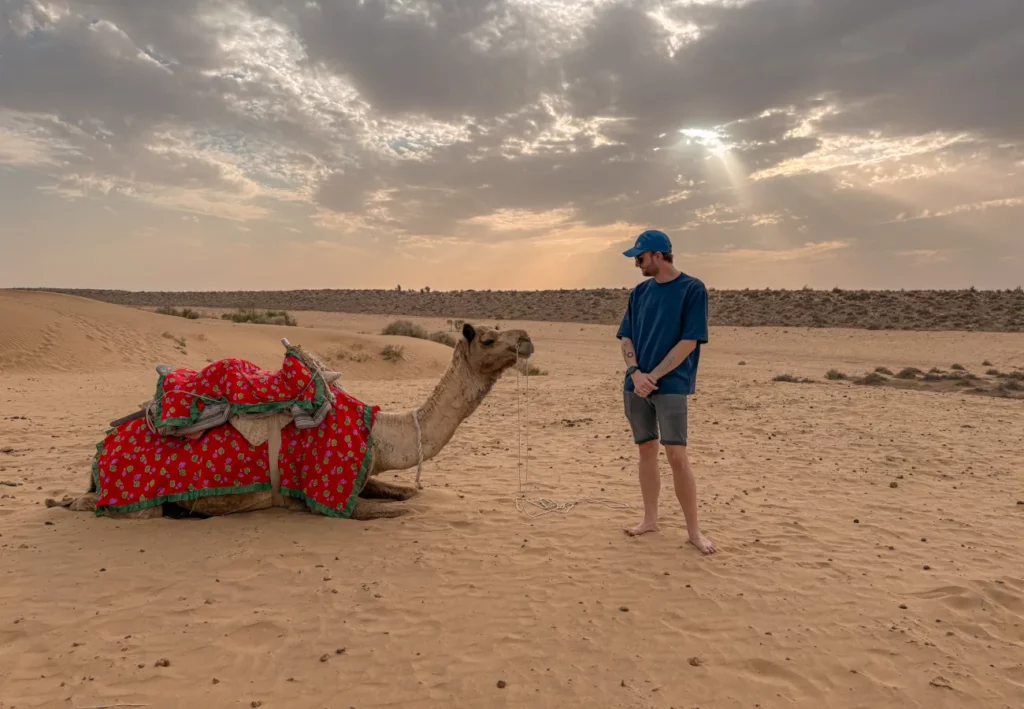
Interactive Map
7 things to do & places to see in Jaisalmer
1. Discover Jaisalmer Fort
Jaisalmer fort is the iconic symbol of the city of Jaisalmer. It sits atop the hill at the centre of the town, looking over the newer modern part of the city with 360 degree views. Made out of sandstone, the fort glows yellow in the roaring desert sun, giving it the name “The golden fort”.
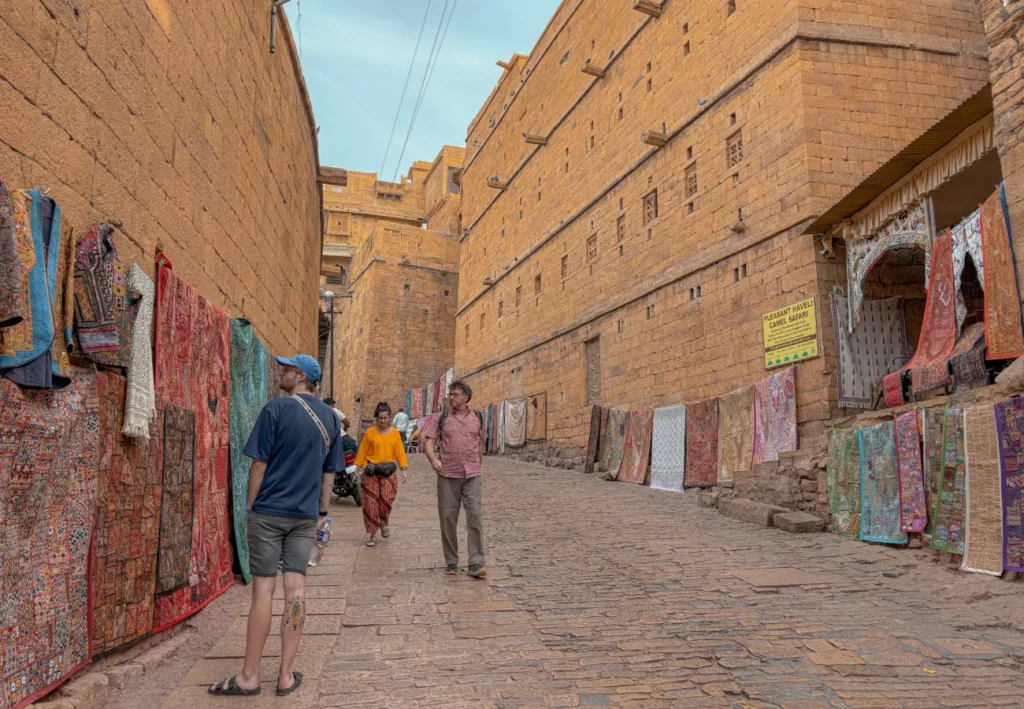
Jaisalmer fort is one of the few “living forts” left in India. The population of the town has continued to live and work within the forts walls for hundreds of years. Unlike the Mehrangarh fort of Jodhpur, which is basically a museum, Jaisalmer fort is home to ¼ of the city of Jaisalmer’s residents. Shops, markets and hotels all exist within its walls and you can explore it all on foot at your own leisure. We recommend taking a guided walking tour of the fort to learn more about its rich history.
Why not see all the sights of Jaisalmer with a guided heritage tour of the city? Check out this heritage walking tour with a professional guide on GetYourGuide.com
2. Visit the Jain temples
Nestled amidst the hustle and bustle within the walls of Jaisalmer fort are a number of Jain temples. Intricately carved from sandstone and rich in history, they are a wonder to explore. Dating back to the 12th century and with newer additions from around the 16th century, these temples stand as remarkably preserved pieces of Indian history. With towering hand-carved sandstone stupas and intricate patterned walls, you can easily spend over an hour soaking in the peace and tranquility of these temples. Still in use today, you will find monks cleaning and tending to the temple as you walk around. Moreover, most of them will be happy to give you some history about the temple and the deities featured in some of the carvings.
Note: The Jain temples cost 250 rupees (2.5 euros) per person for entry to all 7 buildings. You can forego the ability to take pictures for a reduction of 50 rupees on the price of admission.
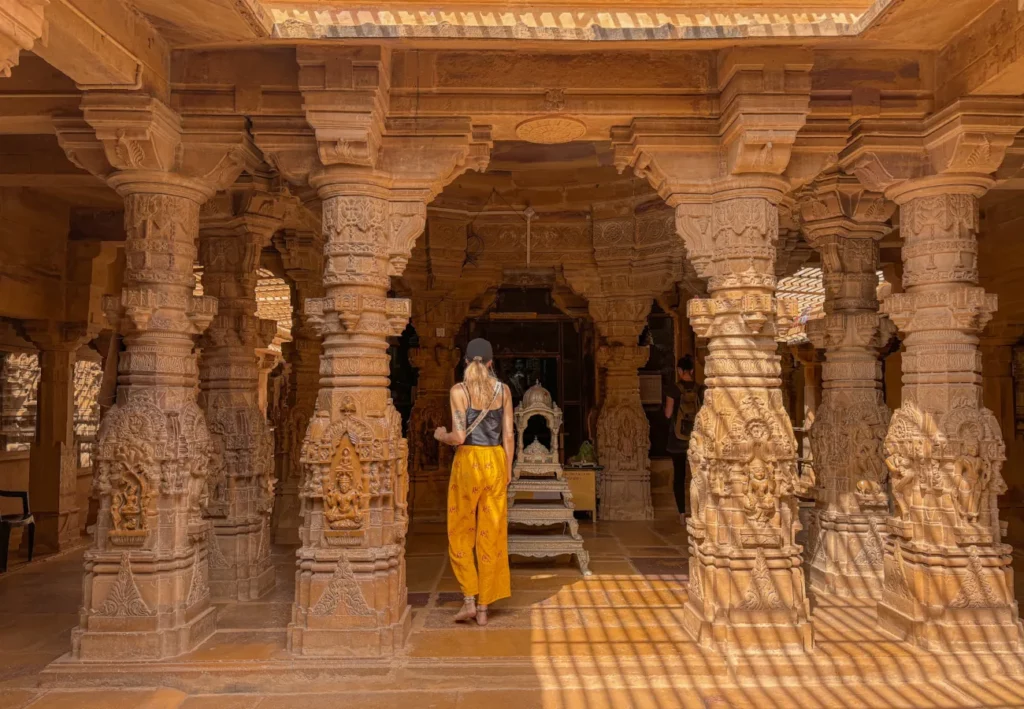
3. Rent a boat on Gadisar lake
Around a 15 minute walk from the centre of Jaisalmer, is Gadisar lake. Historically a vital water source in this arid desert landscape, the lake is now a hotspot for tourists and locals alike. The lake is surrounded by carved sandstone buildings, reflecting the colour and design of the Jaisalmer fort, and there are a number of ornate shrines sat within the lake itself.
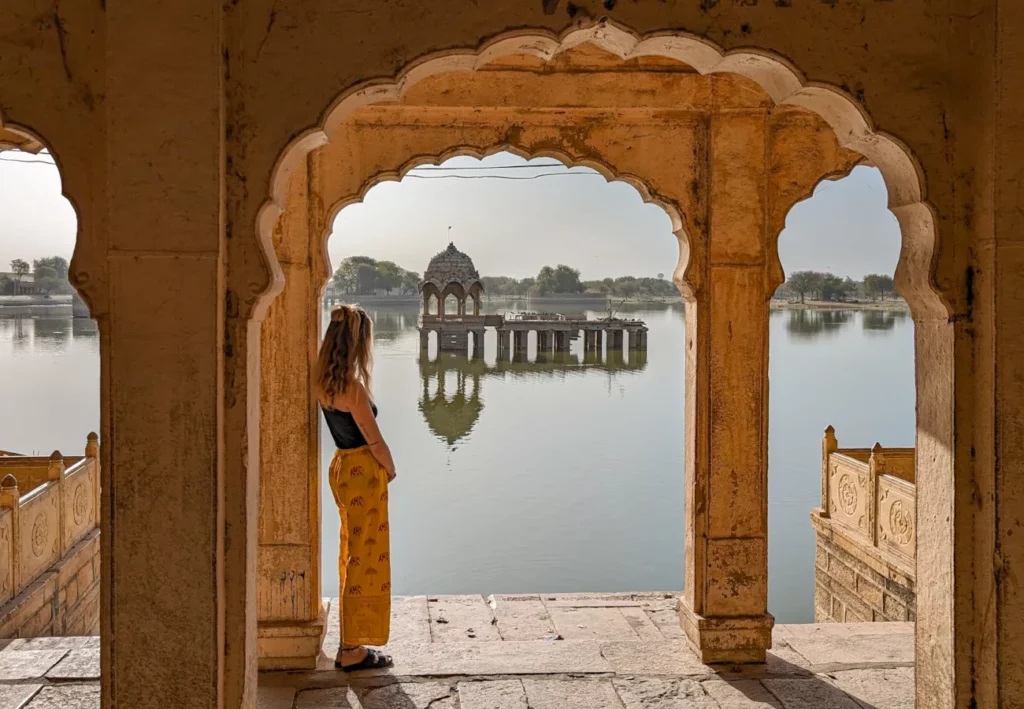
This area of Jaisalmer is surrounded by street food stalls, lakeside cafes with rooftop terraces. You can even rent a boat on the lake! We decided against renting a boat as we visited Jaisalmer in April and it was over 40 degrees celsius! But it is surely a nice way to experience the lake and relax if you have the time and it’s not too hot.
Travel insurance is a must for any holiday abroad, especially in Asia. Although problems rarely occur, it is better to be covered in case they do. We use SafetyWing and recommend it to anyone travelling the world. Check out SafteyWing here.
4. Visit the “Ghost village” of Kuldhara
Around 17 kilometres outside of Jaisalmer is the “Ghost village” of Kuldhara. What was once a bustling, affluent village, was abandoned overnight around 200 years ago. The stories say that a local tyrannical ruler was to take the daughter of the village elder as his 3rd wife. United in the desire to protect the elder’s daughter from the tyrant, all the villagers agreed to go into hiding and leave the village they called home. Overnight, they left the village abandoned and cursed the land, forbidding anyone else to settle there after they left. Consequently, to this day, the land has remained abandoned and is now a tourist attraction.
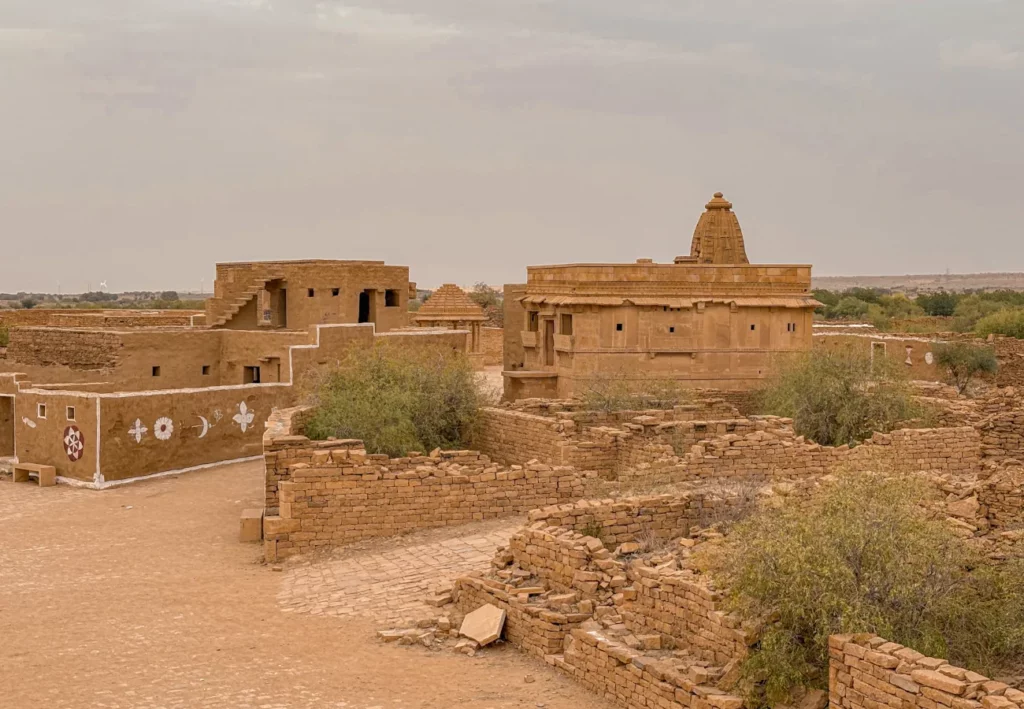
According to locals, in the late 90s, some French tourists were spotted in the area, excavating around the site of abandoned houses and collecting items in their bags. Noticing the outsiders, the locals notified the police, and the tourists were stopped and searched. Consequently, upon inspection of their belongings, the authorities discovered kilos of gold in their possession! Swiftly, the tourists were apprehended, and the treasure was handed over to the appropriate archaeological authorities. As a result, this event sparked modern-day interest in the ghost town of Kuldhara.
5. Go antique shopping in the bazaars of the fort
The narrow streets of Jaisalmer fort and dotted with local markets and vendors selling everything from ornate, handwoven carpets to handmade leather items, traditional sarees and much much more. If you intend to do any souvenir shopping for yourself or your loved ones back home, this is the place to do it! There are a number of specialist antique stores in the Jaisalmer fort selling some really one-of-a-kind and unique pieces you would be hard pressed to find anywhere else in India.
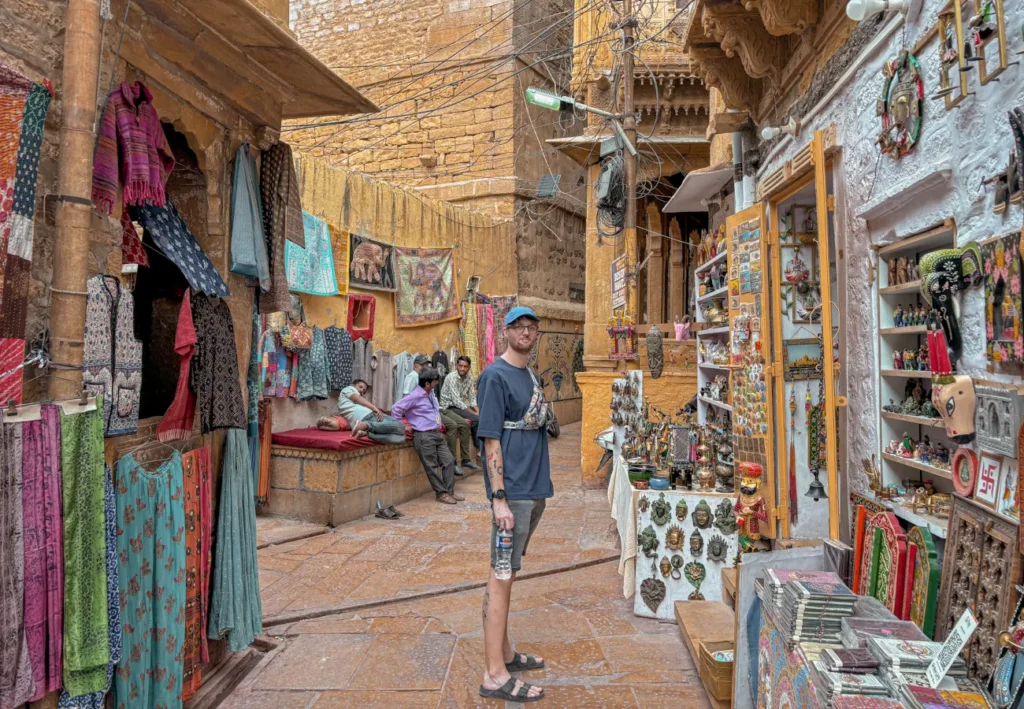
Some of our recommendations are:
When spending money abroad we always use our WISE international debit card. You can withdraw up to 200 euros in cash per month free of charge and won’t pay any conversion fees on transactions. Check out the WISE international debit card here.
6. Soak in the views in one of the city’s many art cafes
Jaisalmer has many trendy, art cafes where you can enjoy a meal on a roof terrace overlooking the city. After a long day of exploring the winding streets of the fort on foot, you can sit back and relax on a rooftop terrace with a nice cold drink, and watch as the sun casts ever changing shades of yellow and gold across the limestone buildings of the city.
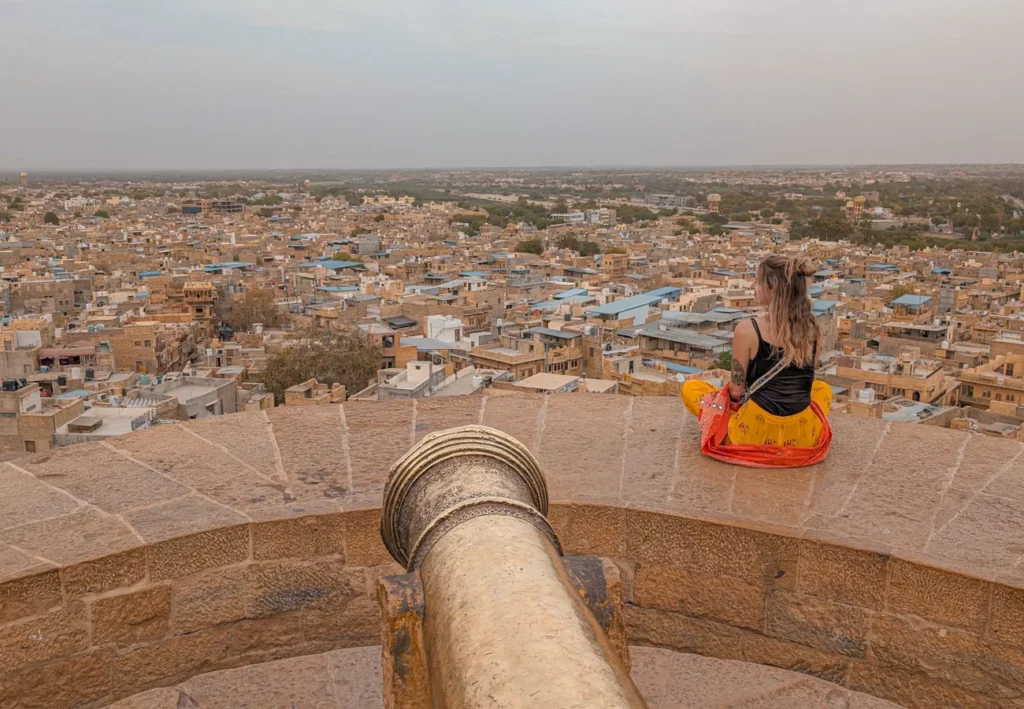
Our favourite spot was The Big Tree Cafe & Restaurant, next to the golden cannon atop the walls of the fort.
7. Explore the Thar Desert with a desert safari experience
The main attraction of Jaisalmer, besides the fort, is undoubtedly the Thar Desert. Almost everyone visiting Jaisalmer engages in some form of desert activity here. Whether it’s trekking, camel riding, overnight camping, or a 4×4 / ATV experience, the options are plentiful. Most homestays and guest houses will assist you in organizing your desert plans and can recommend various experiences based on different budgets. Additionally, there are several ‘luxury’ desert camping areas offering glamping-style tents. Alternatively, for a more back-to-basics experience reminiscent of our time in Erg Chebbi in Morocco (read more about that here), basic desert camping is also available.
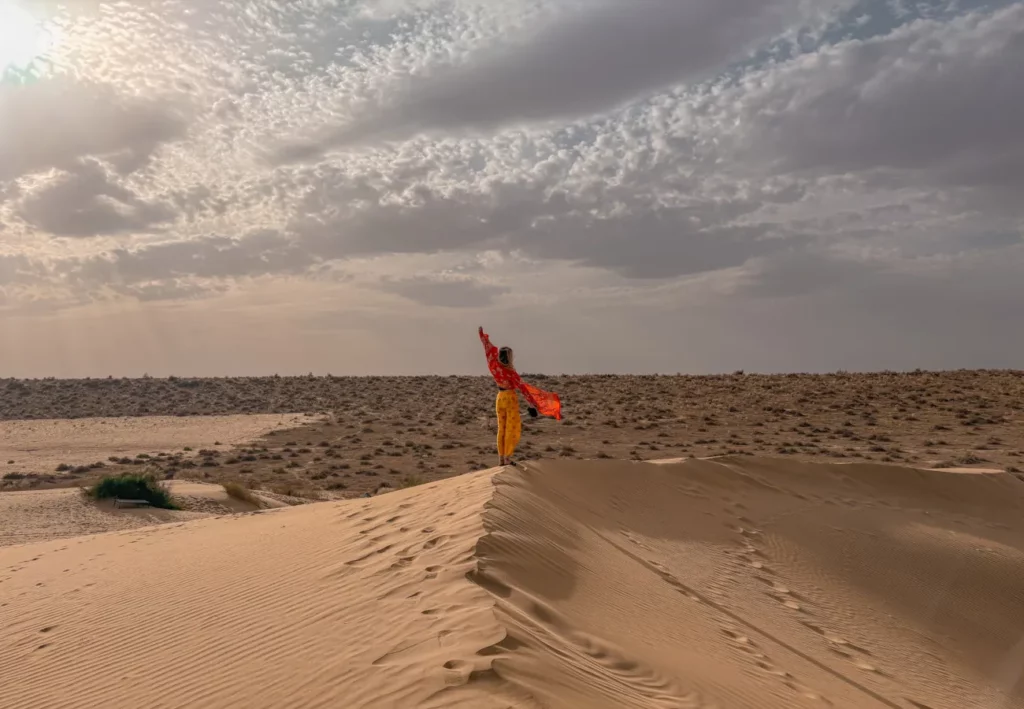
We opted for a half day, sunset desert tour, starting at 3pm. Our first stop was at the ghost town of Kuldhara where our guide gave us some background information and told us the legend of the people. We were then driven around 1 hour away from Jaisalmer to the desert dunes where we had a lavish meal cooked for us by our local guide as the sun set over the desert.
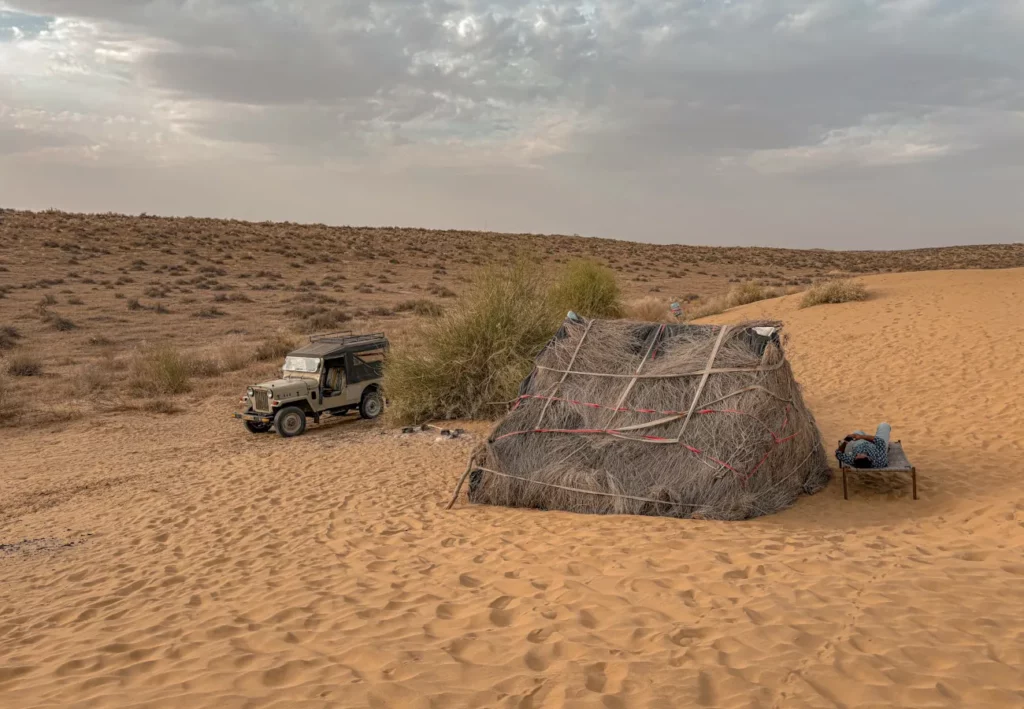
Once the sun had set we had a few cups of hot chai and watched the incredible starry nights sky overhead. We even saw some satellites! Around 8pm we set of back to Jaisalmer arriving around 9pm. In total the experience cost us 1500 rupees per person (roughly 16 euros) and we highly recommend it!
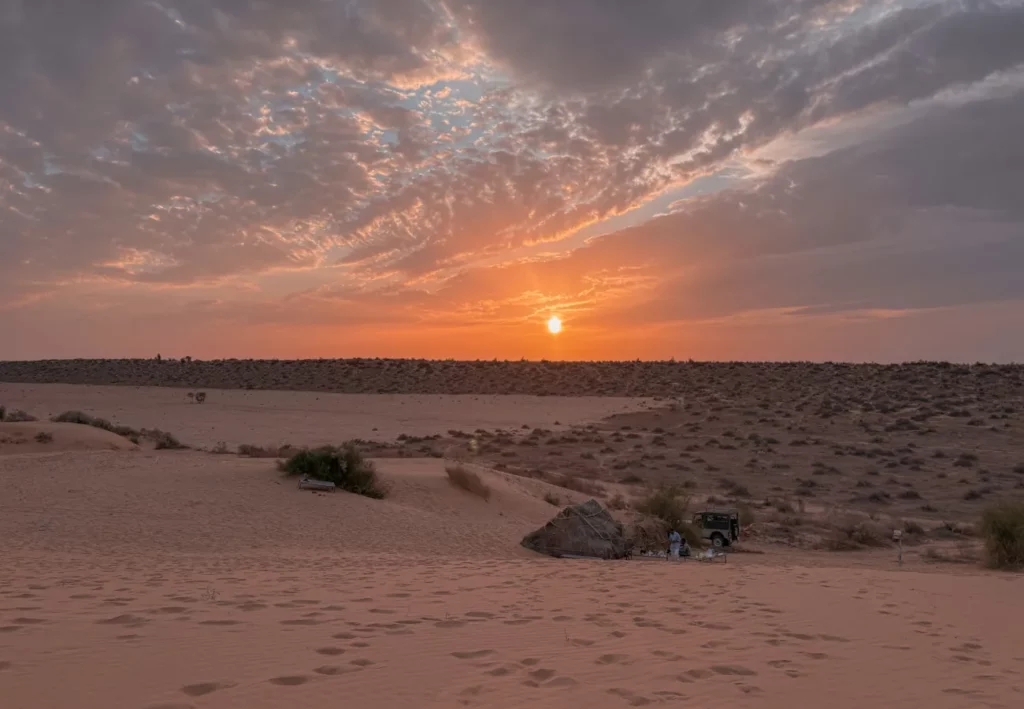
There are tours and packages for all budgets and requirements. From half day to multi day, luxury to budget. Check out some Thar desert tour packages here for more information.
Where to stay in Jaisalmer
You have 2 main options when looking for accomodations in Jaisalmer. The “coolest” place to stay is within the fort itself in one of the many hostels or “havelis” (homestays). Accomodations within the fort are however, considerably more expensive than those outside the fort, and once arriving in Jaisalmer you will have to walk to your accommodation yourself or pay for an expensive tuk-tuk to take you there.
We chose to stay outside the fort in Hotel Dara & Camel Safari, which in our opinion was the better option. Prices are lower, and you are only a 10 minute walk from the fort and most places have rooftop terraces with views of the fort! Below are our recommendations for where to stay in Jaisalmer for all budgets. All our recommendations are rated 8+/10 on booking.com and all come with breakfast included!
Hotels in Jaisalmer View all
How to get to Jaisalmer
Jaisalmer is well connected to most major cities in Rajasthan. We arrived by bus from Jodhpur, and whilst long, the journey was cheap and relatively painless. There are daily connections to and from Udaipur, Bikaner and Jaipur also by bus and train.
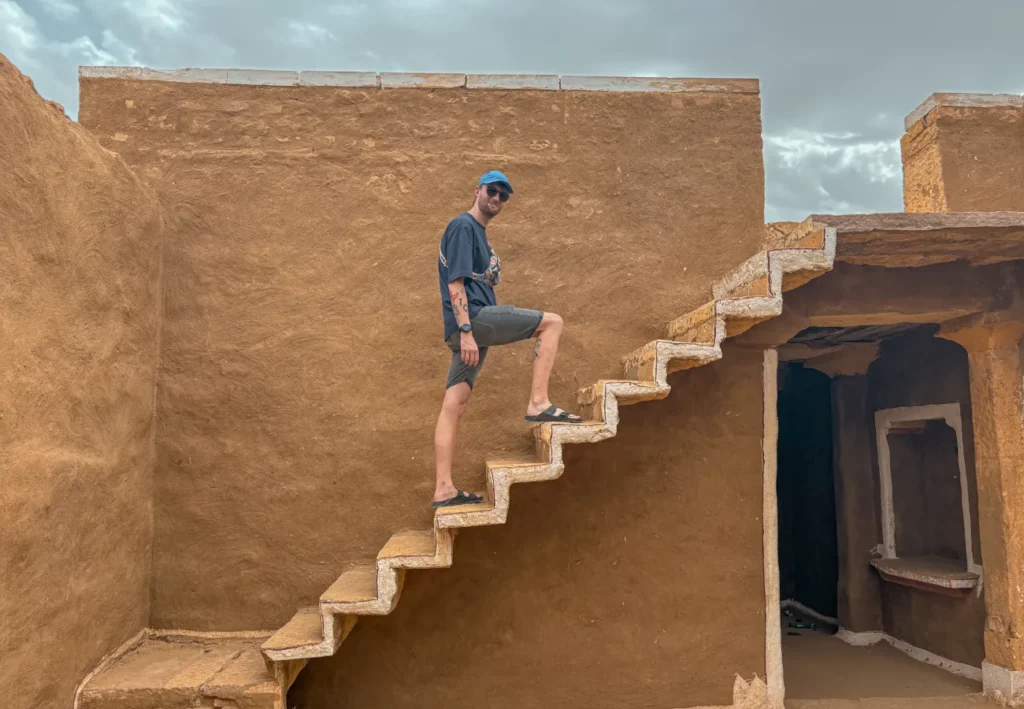
From Jodhpur: There are multiple trains and buses every day, but most leave very early or very late. Be prepared to wake up at 6am for your bus as we had to! Alternatively you can opt for a sleeper bus or train service, but with journey times of only around 7 hours, you might find yourself arriving in Jaisalmer around 4-5am depending on your time of departure. Check bus and train times and prices between Jodhpur and Jaisalmer here.
From Jaipur: There are multiple trains and buses every day and journey times are a long, 12-15 hours. We suggest a sleeper bus or train for this journey if you don’t intend to stop at Jodhpur in the middle. Check bus and train times and prices between Jaipur and Jaisalmer here.
From Udaipur: There are multiple trains and buses every day and journey times are only around 5 hours. This is a popular route though so book tickets in advance! Check bus and train times and prices between Udaipur and Jaisalmer here.
When booking train and bus tickets abroad, we always use 12go.asia. You can check timetables and prices online and it’s often cheaper than booking in person! Check our 12go.asia here.
Best time to visit Jaisalmer
✅ The best time of year to visit Jaisalmer is during the cooler months between October and March. Temperatures range from 25-30°C in the day and 10-15°C at night.
❌ April to July is the hottest part of the year, with temperatures often soaring close to 50°C, so avoid Jaisalmer during summer, unless you love getting roasted! However, we visited at the end of March and whilst temperatures we’re as high as 40°C in the midday sun, it was pleasant to explore the city in the morning and evening. Between July and September is the monsoon season, with a bit of rain most days. The few showers don’t do much to provide a respite from the summer heat, and in fact, can make the season humid.
Top tip: If you visit Jaisalmer during the end of February, you can attend the Jaisalmer Desert Festival. This event takes place every year, 3 days before the full moon in February, and features local, cultural traditions. From turban tying competitions, local folk music to camel racing; The Jaisalmer desert festival is not to be missed if you are here during February.
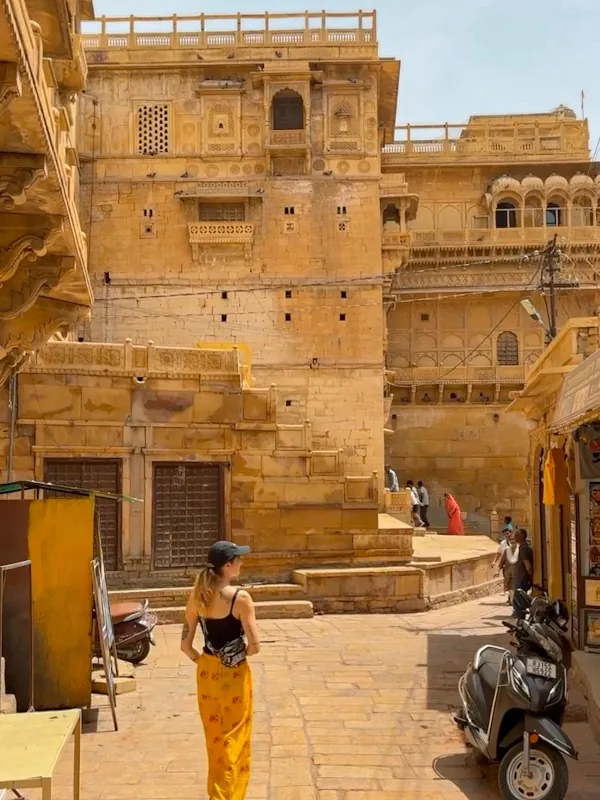
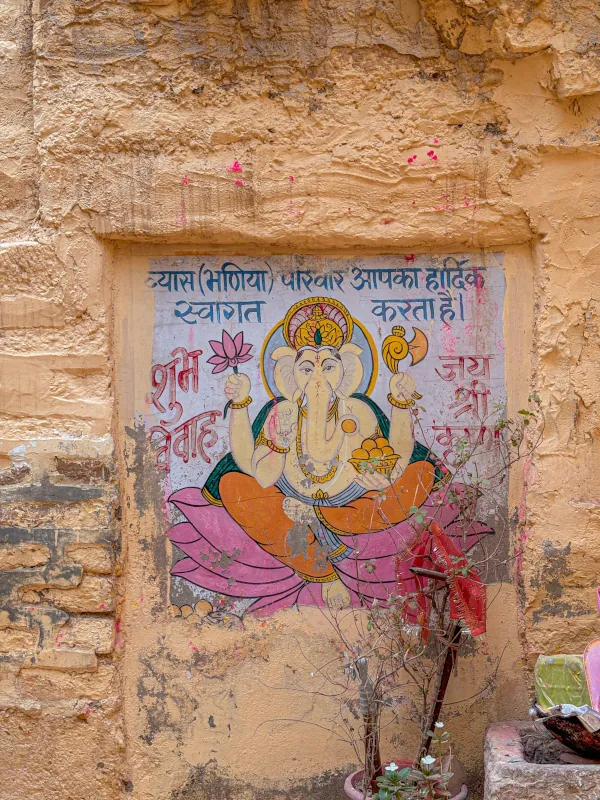
Need to know! Your FAQs about Jaisalmer answered
Because of the searing, golden desert sun that roasts the city for most of the year, combined with the colour of the sandstone used in most of the buildings construction. That gives Jaisalmer its name, the Golden City.
We think 2 days is perfect to see everything that Jaisalmer has to offer. You could easily spend more if you have the time though!
Jaisalmer is situated in the region of Rajasthan in central West India. With the province of Punjab to the north, Gujarat to the south and Delhi to the east, Rajasthan is landlocked and has no coastline. It also borders neighbouring Pakistan on the West.
The majority of people speak Rajasthani, with many others speaking Hindi and English.
Like our list of the top things to do and places to see in Jaisalmer? Why not drop us a comment below! If you’ve been to Jaisalmer, or are planning your own trip in India, we’d love to hear about it!

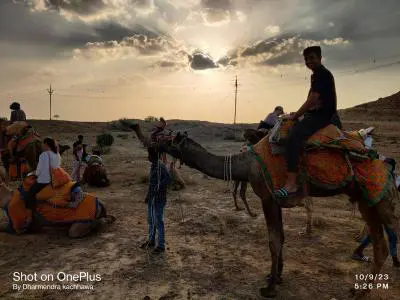



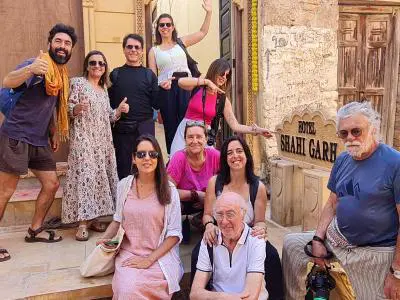





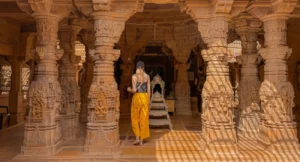
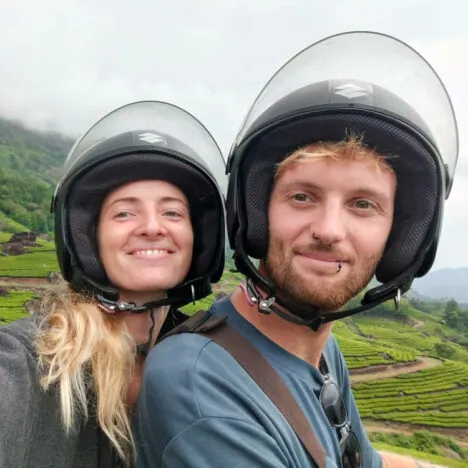
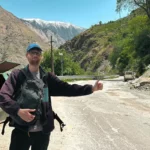
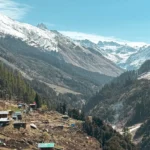
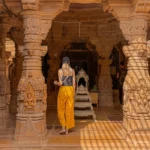
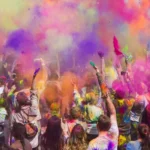
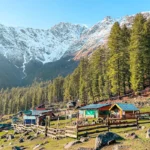
Leave a Reply